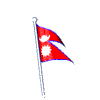

A Few Big Ideas in Economics:
Production Possibilities, Comparative Advantage, and Trade




Remark: In Nepal nearly everyone is a Jack-of-all-trades. Nearly everyone can cook, harvest and butcher their food, bake, repair their own shoes, sew, fix a simple clock, thatch a roof, or build a house. Are they skilled at so many different tasks because they are poor, or are they poor because they don't specialize?
The Principle of Scarcity - Limited resources mean that having more of one good means that we must give up some of another.
The Cost-Benefit Principle - An individual (person, firm, or society) should undertake an action if, and only if, the extra benefits from taking the action are at least as great as the extra costs.
The scarcity principle helps us enumerate the opportunity costs of an activity. The cost-benefit principle is a method for weighing the value of the activity at the margin. The incremental costs and benefits of the activity may be both implicit and explicit.
Caveats for decision makers:
1. When deciding to undertake an activity you ignore the opportunity costs of the action at your peril.
2. The only costs to be considered in taking an action are those that can be avoided if we don't take the action. That is, sunk costs are irrelevant. Sunk costs are distinct from fixed costs and variable costs. Fixed costs remain unchanged as we alter the amount of the activity we have undertaken. Variable costs are those which change with the amount of the activity we have undertaken. For example, Jane buys a PC system for her business for $2,000. The purchase price of the PC is a fixed cost. The electricity, diskettes, paper and toner cartridges that she use with the system are variable costs. Jane becomes aware of the fact that she could sell her system for $600 at a computer fair. We conclude that the sunk cost resulting from her purchase is $1,400; the non-recoverable cost of the initial purchase.
3. The relevant costs and benefits are always marginal/incremental, not average.
The Principle of Low Hanging Fruit - This is otherwise known as the law of increasing opportunity cost, or diminishing marginal returns. Every additional unit consumed or produced is more costly than the last in trms of the opportunities foregone.
Tom, Penelope and Nicole are castaways. They are able to work 12 hours per day. Their daily outputs of pineapples and fish are
 Pineapples |
Fish |
|
| Tom | 6 | 6 |
| Penelope | 12 | 6 |
| Nicole | 6 | 12 |
If they all produce fruit then their daily output is 24 pineapples. If they all produce protein then their output is 24 fish.
Suppose that all three are producing pineapple. Who should switch their production to fish first? If Tom produces one less pineapples, by how much will fish production increase? If Penelope reduces her pineapple production by one, how many fish can she produce? If Nicole reduces her pineapple production by one, how many fish can she produce?
Who should switch their production to fish next? Who should be the last to switch their production to fish?
What is the slope of the production possibilities frontier over the Nicole's fish domain? What is the slope of the PPF over the domain corresponding to Tom's fish production? What is the slope of the PPF over the segment of the domain 18 to 24 fish?
In terms of pineapples foregone, what is the price of the first 12 fish? What is the price of the next six fish? What is the price of the 19th fish; the 24th fish?
For reasons not clear to us, our three castaways each eat 2.5 pineapples with every fish that they consume. If they do not trade with one another, that is each produces for his/her own consumption. Given their PPF, how many pineapples and fish will they each consume? What is total production of pineapples and fish?
Adam Smith appears to the three castaways in their dreams. Subsequently they decide to pool their production. If collectively they still prefer their pineapple to fish consumption ratio to be 2.5 to one, what will be their combined consumption of pineapple and fish?
 A freighter comes by the island and offers
to exchange pineapples for fish at the rate of 3 for 2. That is, they will
sell our castaways three pineapples in return for two fish. Will the
castaways trade with the folks on the freighter? What combination of
pineapples and fish will the trio produce? To what combination of pineapples and
fish will they trade?
A freighter comes by the island and offers
to exchange pineapples for fish at the rate of 3 for 2. That is, they will
sell our castaways three pineapples in return for two fish. Will the
castaways trade with the folks on the freighter? What combination of
pineapples and fish will the trio produce? To what combination of pineapples and
fish will they trade?
A complete set of graphs is available here.